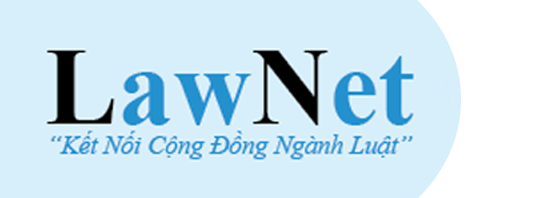Technical procedures for operating a municipal solid waste incineration facility for energy recovery and electricity generation in Vietnam
Below are the provisions regarding the technical procedures for operating a municipal solid waste incineration facility for energy recovery and electricity generation in Vietnam.

Technical procedures for operating a municipal solid waste incineration facility for energy recovery and electricity generation in Vietnam (Image from the internet)
On December 19, 2024, the Minister of Natural Resources and Environment of Vietnam issued Circular 35/2024/TT-BTNMT promulgating the technical procedures for collecting, transporting, and treating municipal solid waste.
Technical procedures for operating a municipal solid waste incineration facility for energy recovery and electricity generation in Vietnam
Article 17 of Circular 35/2024/TT-BTNMT stipulates the technical procedures for operating municipal solid waste incineration facilities for energy recovery to generate electricity in Vietnam from February 3, 2025, as follows:
(1) Preparation
- Arrange workers to receive and preprocess municipal solid waste; operate municipal solid waste incinerators, gas treatment systems, preliminary treatment systems for fly ash, and bottom ash collection; operate power generation systems; operate water supply treatment systems; operate wastewater treatment systems; ensure environmental sanitation and occupational safety;
- Prepare personal protective equipment (safety clothing, boots, helmet, goggles, gloves, masks, safety harness, etc.); brooms, shovels, and other necessary labor tools to assist in receiving and preprocessing municipal solid waste; operating municipal solid waste incinerators, emission treatment systems, preliminary treatment systems for fly ash, and bottom ash collection; operating power generation systems, water supply treatment systems, and wastewater treatment systems;
- Prepare materials and chemicals for incinerator operation (fuel); gas treatment systems (materials and chemicals for dust control, nitrogen oxides (NOx), sulfur dioxide (SOx), hydrochloric acid (HCl), hydrofluoric acid (HF), and adsorbents for organic matters (VOC), dioxins, furans, etc.); water supply treatment systems (coagulants, flocculants, filter materials, etc.); wastewater treatment systems (neutralizing chemicals, coagulants, flocculants, disinfectants, filter materials, etc.); collect and preliminarily treat fly ash (complexing agents) and other necessary materials and chemicals;
- Inspect machinery and equipment in the area for receiving and preprocessing municipal solid waste (weighbridge, negative pressure devices, grabs, gas extraction devices, etc.); check the technical conditions of the incinerator; emission treatment systems, preliminary systems for fly ash, and collection of bottom ash, power generators; water supply and wastewater treatment constructions and equipment (chemical pumps, wastewater pumps, agitators, aerators, etc.) to ensure compliance with technical requirements per regulations.
(2) Receiving and Preprocessing Municipal Solid Waste
- Check the transportation order. Guide waste transport vehicles over the weighbridge when entering and leaving the treatment facility to determine the volume; issue weight certificates for waste handover; record received municipal solid waste data;
- Guide transport vehicles to dump waste into the storage pit;
- Compost municipal solid waste in the storage pit; regularly mix the waste using a grab during composting to reduce moisture and increase calorific value; remove non-combustible waste.
(3) Operating the Municipal Solid Waste Incinerator, Emission Treatment Systems, Pre-treatment Systems for Fly Ash, and Bottom Ash Collection
- Load municipal solid waste meeting moisture and calorific value requirements from the storage pit into the incinerator’s feeding hopper using a grab or loader;
- Operate the incinerator following the correct procedure and design capacity. Continuously monitor the incinerator's technical parameters and requirements (pressure, gas feed rate, oxygen concentration, temperature, residence time, etc.) throughout the operation. Inject supplementary fuel in cases when the temperature does not meet regulatory requirements;
- Operate the emission treatment system to treat dust, nitrogen oxides (NOx), sulfur dioxide (SOx), hydrochloric acid (HCl), hydrofluoric acid (HF), and organic substances (VOC), dioxins, furans, ensuring emissions post-treatment meet environmental technical standards. Operate automatic, continuous emission monitoring systems and transmit data to the environmental management authority per regulations;
- Control and moisten bottom ash to minimize dust generation; transport the bottom ash to the storage and treatment area per regulations;
- Add complexing compounds to fly ash to limit heavy metal dispersion in the fly ash into the environment; transport to the storage area; classify, manage, and treat fly ash per regulations.
(4) Operating the Power Generation System
- Operate the superheated steam supply system for power generation turbines according to the correct procedure and design capacity;
- Condense and recirculate low-pressure steam for reuse in boiler feed.
(5) Operating the Water Supply Treatment System
- Pump water to the water treatment system; treat water supply to ensure quality for facility operations; soften water (demineralize) for boiler feed;
- Collect, store, and treat sludge generated from the water treatment system per regulations.
(6) Collecting and Treating Wastewater
- Collect wastewater from generating sources (leachate, wastewater from emission treatment systems, domestic wastewater, and wastewater from cleaning workshops, machinery, equipment, and labor tools, etc.) to the wastewater treatment system or transfer for treatment per regulations;
- Treat wastewater using a combination of physicochemical and biological methods, settling, filtering, disinfection, or other suitable methods to ensure post-treatment meets environmental standards for reuse or discharge per regulations;
- Collect, store, classify, and treat sludge generated from the wastewater treatment system per regulations.
(7) End of Work Shift
- Inventory, inspect, and hand over machinery, equipment, materials, and labor tools to the next shift;
- Clean and group vehicles and labor tools to the designated areas;
- Clean the environment, machinery, and equipment in each part of the facility at the end of the work shift;
- Sweep waste from internal roads, corridors, and municipal solid waste receiving areas; unblock drainage systems; spray deodorant and insecticide chemicals;
- Compile and report information and data on municipal solid waste treatment per regulations.
More details can be found in Circular 35/2024/TT-BTNMT effective from February 3, 2025.
- Number of deputy directors of departments in Vietnam in accordance with Decree 45/2025/ND-CP
- Cases ineligible for pardon in Vietnam in 2025
- Decree 50/2025 amending Decree 151/2017 on the management of public assets in Vietnam
- Circular 07/2025 amending Circular 02/2022 on the Law on Environmental Protection in Vietnam
- Adjustment to the organizational structure of the Ministry of Health of Vietnam: Certain agencies are no longer listed in the organizational structure
- Vietnam aims to welcome 22-23 million international tourists in Vietnam in 2025
-

- Number of deputy directors of departments in Vietnam ...
- 15:04, 05/03/2025
-

- Cases ineligible for pardon in Vietnam in 2025
- 14:43, 05/03/2025
-

- Decree 50/2025 amending Decree 151/2017 on the ...
- 12:00, 05/03/2025
-

- Circular 07/2025 amending Circular 02/2022 on ...
- 11:30, 05/03/2025
-

- Adjustment to the organizational structure of ...
- 10:34, 05/03/2025
-

- Notable new policies of Vietnam effective as of ...
- 16:26, 11/04/2025
-
.Medium.png)
- Notable documents of Vietnam in the previous week ...
- 16:21, 11/04/2025
-
.Medium.png)
- Notable documents of Vietnam in the previous week ...
- 16:11, 02/04/2025
-
.Medium.png)
- Notable new policies of Vietnam to be effective ...
- 16:04, 02/04/2025
-
.Medium.png)
- Notable new policies of Vietnam effective from ...
- 14:51, 21/03/2025

 Article table of contents
Article table of contents
